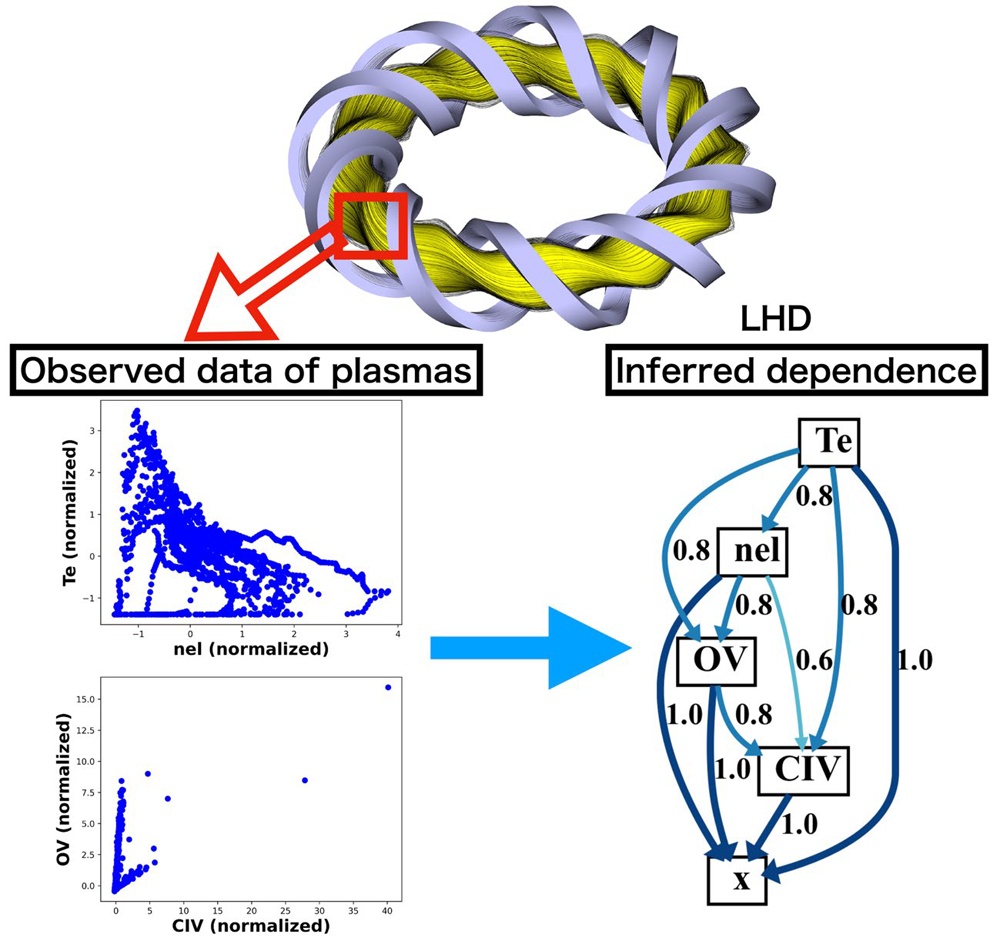Development of a causal discovery code IEDS for inferring dependence among variables in plasmas
We have developed a causal discovery code called IEDS to examine plasma discharge data from the Large Helical Device (LHD). Using IEDS, we can quantitatively identify how a key physical variable in plasmas influences another. It is confirmed that our method successfully reproduces findings from earlier studies and that the causal discovery method can be applied to fusion plasma research. This method is expected to help us model fusion plasmas and deepen our understanding of the complex phenomena in plasmas.

Achieving practical fusion power requires reliable control and accurate prediction techniques from ignition to plasma sustainment. Various codes have been developed over the past few decades to support the analysis, control, and prediction of plasmas. However, several critical phenomena remain to be understood, and some of them, such as turbulence-driven transport, are difficult by which to derive governing equations. Rather than deriving such equations from those phenomena, we quantify statistical dependence among key plasma variables.
Our research team has developed a causal discovery code, IEDS, for plasma fusion analysis, which is based on and extends a multivariate nonlinear causal discovery code, AbPNL. A nonlinear approach is essential because many relations in fusion plasmas are strongly nonlinear. The method used in this study assumes that specific functional relations describe dependence among physical quantities and employs a neural network to perform regression. We infer the dependence among variables by extracting information from regression errors, which are often neglected in conventional regression techniques.
Using IEDS, we inferred the dependence in the plasma discharge data. As a result, it was confirmed that all four variables, the edge temperature (Te), line-averaged electron density (nel), oxygen impurity emission intensity (OV), and carbon impurity emission intensity (CIV), which were predicted to contribute to the stability of plasmas indicated by x in previous studies, indeed affect stability. Furthermore, the estimated dependence between OV and CIV suggests that OV influences CIV. This result corresponds with findings from plasma time-series analysis and theoretical predictions of the cooling rates of impurity species in plasmas. In addition, the dependence between Te and nel, as expected in terms of the transport theory, was almost entirely captured by our method.
Analyzing the physical phenomena in fusion plasmas, which are particularly difficult to model using equations, remains a significant challenge. The code developed in this study is expected to be valuable for future analyses of physical phenomena in fusion reactors by inferring the dependence among variables for modeling the physical phenomena.
The research was conducted by a group led by Ph.D. student Akiyoshi Anzai, Senior Lecturer Emi Narita, and their colleagues at Kyoto University.
This research result was published in Physics of Plasmas, a journal of the American Institute of Physics, on March 20, 2025. Furthermore, the causal discovery code, IEDS, developed in this study, will be made publicly available.
